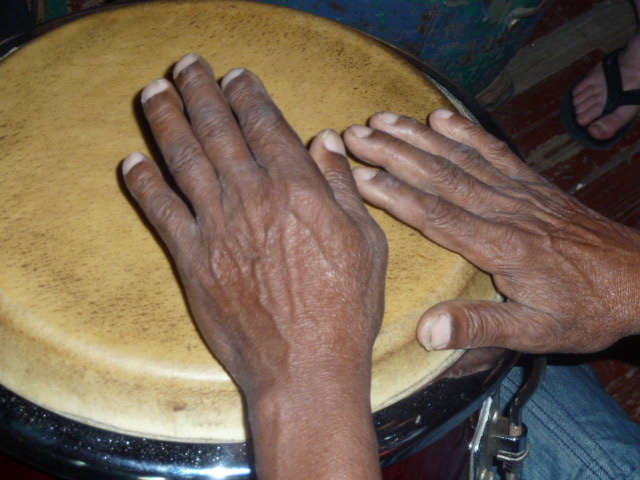I was talking to a friend the other day about a drum I had mentioning that the new skin did not leave it with a lot of bass tone. He mentioned to me, “that’s O.K. because I don’t really use the bass note too often anyway”. Of course I schooled him and shared with him some of the following information.
Depending on our personal development technique wise we may or may not have a lot of different sounds on our drums. The bass note is indeed as important as your tone, different slaps, muffs and anything else you might come up with.
The bass is important in basic parts, accompaniment parts in both west african and afro cuban drumming and other styles originating in the african diaspora. All basic parts and all rhythm arrangements always have bass notes in them be it Cuban, Brazilian, Haitian, West African. Sometimes teachers leave out a bass note or slim down parts because it is difficult to put certain parts together but my point is that the bass is essential as the ground and framework for any rhythm.
For soloing if you use your bass you can increase your sound differential 33% or more (or less) if you are only using slap and tome. That is a lot! The bass works great when soloing used with space! “Space, the final frontier” goes hand and hand with the bass note, like yin and yang, salt and pepper, black and white. If you use slap, tone, bass and space you have now really increased your creative sound opportunities.
Furthermore, if you start rolls with a bass note or if you actually start a series of rolls rolling with bass notes as a roll in and of itself prior to a roll with slaps or tomes it is very interesting dynamically because it will give you a dynamic sound build up or “roll in” from soft to loud.
Starting any roll sequence with one or two bass notes is also a great way to create bounce for the roll, that helps you push your roll off and get started. Just like you are springing off of a diving board.
Pleas experiment more with your bass notes, look for parts that have them and use them as much as possible with space framing them (before or after bass notes). This creates sound “dynamics”.
Sound dynamics are when you play rhythms or patterns or arrangements and the sound is not all the same level or out put. You can think of dynamics as breath. When you breath you don’t suddenly breath in and suddenly breath out. If you did you would pass out. You naturally breath in in abuild up and gradual exhale.
We want to get our rhythms and how we all play together and by ourselves “breathing” with dynamics. It does not have to be as loud as you can and as fast as you can every time you play.

